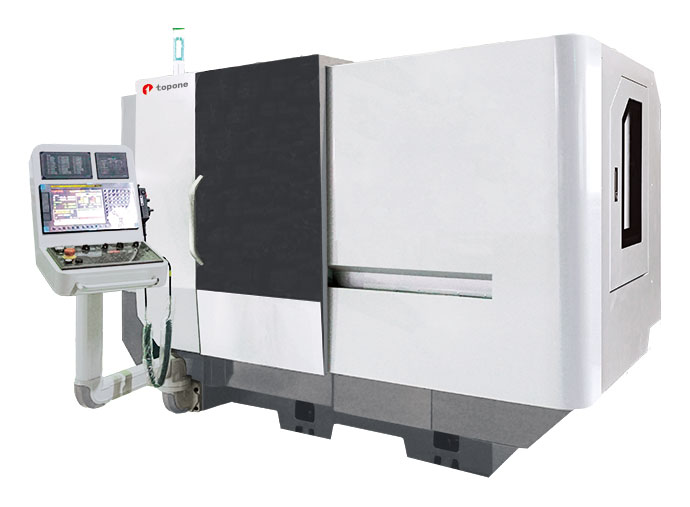Press Releases
Choosing between manual vertical knee milling machines and CNC vertical knee milling machines greatly influences machining performance, efficiency, and precision. Each type has its strengths, depending on the complexity, scale, and goals of the project.
🔹 Precision and Accuracy
Manual milling depends on the operator’s skill, which can lead to variation in results. CNC milling, by contrast, delivers consistent precision through computer-controlled movement, maintaining tolerances as tight as ±0.001 inches—ideal for applications that demand exact specifications.
🔹 Productivity and Efficiency
Manual mills require constant human control, making them slower and more labor-intensive. CNC mills offer faster speeds, automatic tool changers, and program-based workflows. Once set up, they can perform multiple operations in a single cycle, increasing throughput and lowering labor costs.
🔹 Part Complexity
For simple shapes like flat surfaces or holes, manual mills are suitable and easy to use. But for more intricate parts or multi-axis geometries, CNC mills are far superior. They handle complex designs with ease and require no special fixturing.
🔹 Flexibility
Manual knee mills are ideal for one-off parts, prototyping, and repairs, where machinists may need to make quick adjustments. CNC mills, with programmable operations, are better for repeated jobs. Programs can be saved, edited, and reused for consistent output across batches.
🔹 Cost Considerations
Manual machines have a lower initial cost and are easier to maintain. They are suitable for smaller shops with tight budgets. CNC machines require a higher upfront investment but provide better long-term returns through higher productivity, reduced waste, and fewer rework needs.
🔹 Skill Requirements
Manual milling requires trained machinists, which can raise labor costs. CNC machines simplify most operations and shift the expertise toward programming and setup. This allows shops to scale operations with fewer highly skilled operators.
🔹 Safety Advantages
Manual milling involves direct contact with the machine, which increases safety risks. CNC mills are enclosed and automated, minimizing operator exposure to cutting tools and reducing the likelihood of accidents.
🔹 Key Applications
Manual mills: Best for low-volume parts, custom work, maintenance, and education
CNC mills: Ideal for high-volume production, detailed parts, and industries requiring precision and consistency
Whether you're creating custom tools, teaching machining principles, or producing high-precision parts, TOP-ONE offers a Vertical Knee Milling Machines solution that meets your needs.
CNC internal and cylindrical grinding machines play distinct roles in precision machining. Choosing the right one depends on the part geometry and tolerance requirements. Here’s a focused comparison:
⚙️ Purpose & Application
CNC Internal Grinders:
Built for machining internal surfaces like bores and cavities. Ideal for high-precision needs in bearing rings, molds, or medical devices.
CNC Cylindrical Grinders:
Designed to shape the outer surface of cylindrical parts such as shafts, rods, or tubes. Common in automotive and aerospace production.
⚙️ Machine Design
Internal Grinders:
-Vertical or horizontal spindles
-Small grinding wheels for confined areas
-More complex setups due to tight internal spaces
Cylindrical Grinders:
-Horizontal spindle layout
-Workpiece rotates between centers or in a chuck
-Uses larger grinding wheels for outer surfaces
⚙️ Grinding Process
Internal Grinding:Material is removed from inside the part. Excellent for tight tolerance bores and ultra-smooth finishes. Includes planetary or centerless setups.
Cylindrical Grinding:Both the wheel and workpiece rotate. Handles plunge or traverse grinding to shape external contours precisely.
⚙️Accuracy & Surface Quality
Both machines offer high precision, but serve different tasks:
Internal grinders focus on flawless interior geometry and micro-level bore precision.
Cylindrical grinders ensure consistent diameters across long external surfaces.
⚙️Material Handling
Internal grinders often need custom fixtures to hold delicate parts.
Cylindrical grinders use simpler chucks or centers due to easier surface access.
✅ Summary
CNC internal grinders are ideal for ultra-precise internal geometries, while cylindrical grinders are the best choice for consistent, high-quality external surfaces. Understanding these functional differences is key to improving production quality and efficiency.
✅ Recommended
As a leading CNC Grinding Machine Manufacturer from Taiwan, TOP-ONE MACHINERY CO., LTD. offers robust, precision-driven grinding solutions trusted worldwide:
🔹 TIG-50 CNC Internal Grinding Machine
Perfect for ultra-precise bores and internal cavities.
🔹 TOG-2550 CNC Cylindrical Grinder
Engineered for rigid and accurate external surface grinding.












